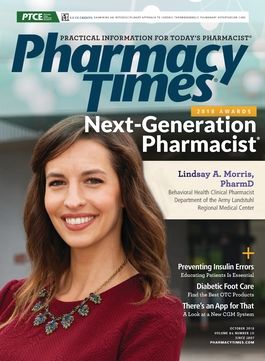Publication
Article
Pharmacy Times
Medical Marijuana in Ohio
Author(s):
With medical marijuana scheduled to be sold in ohio as early as December, the situation will get interesting, to say the least, as qualifying prescribers will not be writing prescriptions but providing “recommendations.”
With medical marijuana scheduled to be sold in ohio as early as December, the situation will get interesting, to say the least, as qualifying prescrib- ers will not be writing prescriptions but providing “recommendations.” We cannot call them prescriptions because marijuana is a Class I (CI) controlled substance under federal law, and a CI drug has, by description, “no medicinal value.”
Ohio, however, has decided that our medical marijuana will be a Class II drug, even though controlled-substance laws have always allowed the states to be more restrictive than the feds. In 2015, Ohio tried to not only pass a medical marijuana bill but include recreational legalization, too. That measure was soundly defeated, as the poorly worded bills would have essentially given 10 families complete control over production of the legal weed. One portion of the campaign that tugged at some residents’ heartstrings was the video of a 3-year-old girl who had seizures. Her family had to move to Colorado to find the cannabis drops needed for relief. But this still did not result in legalization.
Ohio’s legislature decided to try to cut recreational marijuana use off at the pass by legalizing medical marijuana. The legislation allows prescribers who have undergone a short training session to give patients a recommendation to received medical marijuana. Patients take these recommendations to one of Ohio’s medical marijuana dispensaries, which offer a variety of medical marijuana forms, including drops, edibles, and leaf material that is legal only if it is vaped and not smoked.
The ultimate decision as to what form of medical marijuana is purchased is between the patient and the clerk, affectionately nicknamed the “budsman” in the Buckeye State. The clerk’s only real qualifications are to have a high school education and no serious criminal record. My guess is that if a patient comes in and wants leaf material, that is exactly what he or she will get. I am guessing that leaf material will be the most popular form of medical marijuana, but I could be wrong.
Several medical problems will qualify Ohio residents to buy the cannabis. Pain was, by far, the most reported medical condition in Colorado needing medical marijuana, and it will likely be the same in Ohio. I am very much an advocate for pain patients, but I am not sure how many of these patients who choose pain as their medical condition are legitimate pain patients.
My stance has not changed regarding medical marijuana, and it is a view that has oftentimes gotten me harsh and vulgar criticism from a few readers. I applaud Marinol (dronabinol) and the new GW Pharmaceuticals drug, Epidiolex, that has cannabis as a component and was approved by the FDA only after countless years and millions of dollars of testing. I think it is very possible that other cannabis-based drugs can be developed, and I hope that avenue remains open for drug companies to pursue.
But I question why medical marijuana is not subject to the same scrutiny and testing that pharmaceutical companies wade through. The FDA was created to protect us from drugs that may cause more harm than good without proper screening.
Medical marijuana should go through the same hoops as other pharmaceuticals do with the FDA and then be doled out only by licensed prescribers and dispensed by registered pharmacists. It is a protection that the FDA has provided the American public for decades, and for the most part, it has provided a significant safety net.
Cmdr. John Burke is a 40-year veteran of law enforcement, the past president of the National Association of Drug Diversion Investigators, and the president and cofounder of the International Health Facility Diversion Association. He can be reached by email at burke@rxdiversion.com or via rxdiversion.com.







